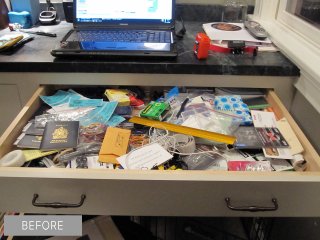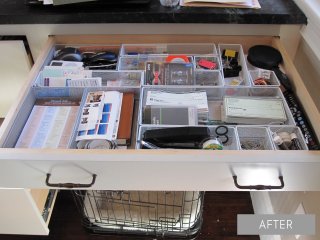How to Organize your Home Office: Most of us began working from home suddenly and without having an opportunity to plan properly. Temporary offices and shared offices were tossed together for, what many of us thought, would be a short time. Now that we’ve all been home for a while, I thought advice from an organizing expert could prove helpful. Fortunately for all of us, my great friend MJ. Rosenthal just happens to be a seasoned professional organizer. I interviewed her on April 10, 2019.
Interviewer: Gayle Gilberto for MPI New England
Interviewee: MJ Rosenthal, Certified Professional Organizer
Organization & Executive Function Coach: An Organized Life
GG: Are there universal rules for organizing an office?
MJ: The one big rule is to make it work for you. I share with clients that organizing is not “one style” or “one container” fits all. It’s a very personal application. One person’s order is another person’s disorder.
Some general “Good rules of organizing” which apply to most of us include:
Store Like Items Together
Keep Frequent Use Items Most Accessible
Instead of asking “Where You Should Put It?”, ask “How Will I Look For It?” How you answer the latter will help you determine the former.
When you decide to do any organizing task, make it small enough so you don’t feel overwhelmed. Break it up into segments and time block them to minimize stress.
GG: Most home offices are used for chores like family bills and mail. Are there easy ways to organize both work and personal tasks from home?
MJ: Sure. Here are some easy ways to clear the clutter and re-set for how you need to use the space today:
The first thing to do is to divide up the individual items based on the task. Group work items/tasks together; group personal items/tasks together.
When you use an item less often, or for both categories (like office supplies or technology) keep some with each grouping — or store with other like items that are less frequently used.
Once you divide up the stuff, get ready to relocate the categories to their own spaces/ surfaces.
The second step is to divide up the real estate. Decide where you will do your “work” (maybe at the desk in the office) and where you will do your “personal” (perhaps at a temporary desk in the same space or a folding table in another room of the house).
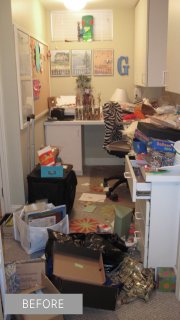
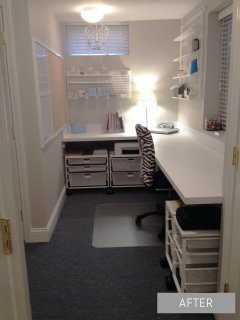 Make sure whatever area/surface you choose is devoted only to the task of “work” or “personal/home” — avoid “technical errors” (mixed categories) and co-mingling of other non-related categories.
Make sure whatever area/surface you choose is devoted only to the task of “work” or “personal/home” — avoid “technical errors” (mixed categories) and co-mingling of other non-related categories.
The third step is to decide where to locate items. We answer this question based on (1) how we will use it next (2) frequency of use and (3) emotional attachment.
Items that are engaged with most often should be assigned real estate within arms reach of the task. (I.e., — computer and key board, pen/pencil, to-do list, printed paper to review, brain toy you play with all the time to help you think) — and items which are used less frequently should go to secondary storage areas (reference material, back up supplies, to be filed, charging cords, etc.)
If you love it, keep it! A picture of your family, a treasured memory, an inspiring poem— all of these items are as important as your laptop or cell phone. But keep it simple. Too much of a good thing becomes overwhelming.
Now is the time to link our space, tasks, what we have to do and our time to do it. Space Planning (how we use the space) and Time Blocking (when we do the stuff we hold onto) go hand and hand. A clutter-free space means linking “what you have to do” to a time you “have to do it.”
GG: Do you use labels to help your clients organize?
MJ: Yes. This is a hard and fast rule. Yes. Labeling does several things:
One, it reinforces your decision about location and incorporates the muscle memory of movement, cerebral decision of what to call it, and aesthetic decision of what the label looks like. All of these factors help to “set” an organizational memory.
Two, most of us respond extremely quickly to visual cues (that’s why we leave things out to jog our memories). Having clear information identifying what the item is is the easiest method for storage and retrieval. Labels can take the form of label tape, Post Its, writing on the outside of the box, etc — and labeling in our calendar via Time Blocking.
GG: For folks who did not have a home office and now need to create one: How can they take a non-separate room space and turn it into a workable office? What’s most important for making this a productive space?
MJ: Another great question. Many of us are turning spaces which have been functioning in one way into a space that can serve a different purpose, like a dedicated work from home office.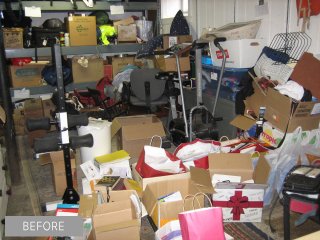
The first thing we need to do is clear out the room we are going to use. I use the SPACE Process.
Sort
Purge
Assign
Contain
Engage/Evaluate
Once we have cleared the stuff, we are ready to re-set with the sorted “work” items. Starting with a clear space leads to clearer, more purposeful decisions on where to locate things.
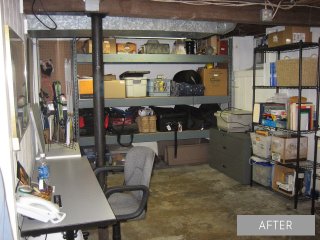
We talked about function and frequency of use above, but aesthetic choices — and space planning — is also motivating when creating a home-based office.
Consider how your desk/office at work was set up. Are you a creature of habit and do you need to set up in a similar way to create historical comfort? What does your chair feel like — can you comfortably sit for long periods? Is a stand-up desk a better fit? Merging function and feeling together creates a space of balance, peace, and productivity.
GG: For people who want more personalized, professional assistance: Do you offer Virtual organizing sessions?
MJ: Yes, I’ve been providing Virtual Organizing services to Clients who have moved away or live in a remote region, as well as Coaching Programs to Clients with ADD/ ADHD & Executive Function Coaching; the virtual structure is something we’ve had in place for many years. Now local Clients are taking advantage of the Virtual Organizing Programs because they offer a huge amount of support and productivity in a very short time frame.
GG: Thank you, MJ. This was very instructive. We can use some of these tips for organizing our home offices or just about any other space!
MJ: Thank you! Be safe, be healthy, be organized.
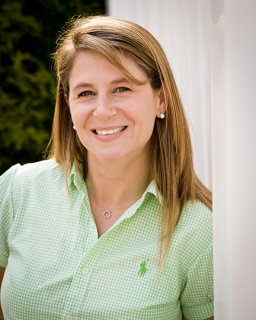 Photos courtesy of An Organized Life
Photos courtesy of An Organized Life

